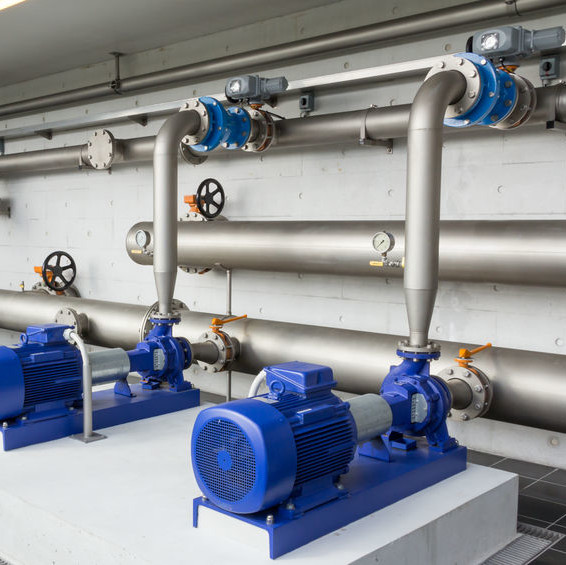
Hygienic Design of Pumps
What is the Hygienic Design of Pumps?
Pumps are ancillary equipment which are used in virtually any food processing plant. The main purpose of a pump is to push fluid materials through pipeline by means of pressure. Pumps are closed systems that come into direct contact with food products, and so should be hygienically designed, constructed and installed to preserve food safety.
Two types of pumps are used in bakeries are:
- Kinetic pumps (e.g. centrifugal pumps): for transporting low viscosity liquids such as water, cleaning solutions in CIP systems and liquids free from suspended particles)
- Positive displacement pumps (e.g. rotary lobe or gear pumps): for transporting viscous liquids such as flour brews, liquid sweeteners and cream yeast).
How does it work?
The hygienic design of pumps encompasses the considerations that must be taken into account during the design, construction and installation of a pump so that it does not become a contamination source for the products being transported in the bakery.
Bakers and food processors often do not pay enough attention to the importance of hygienically designed pumps and other pipeline components such as valves, pipe fittings/accessories and sensors, that allow the plant to operate smoothly. Pumps having unhygienic design features can only be cleaned effectively after dismantling, which is totally undesirable.
Principles/guidelines for hygienic design of pumps1,2
- All pumps interior surfaces in direct contact with products should be smooth, free of cracks and crevices, nonporous, nonabsorbent, nonreactive, corrosion resistant, and nontoxic.
- Pumps (motor and casings as well) should be readily accessible or removable for further cleaning, disassembly, inspection, repair or any other purposes.
- They should be CIP-able. They should allow for CIP to be carried out efficiently and with verifiable results (post-cleaning microbiological validation).
- Only 300 series stainless steel material should be used in the construction of pumps intended for handling of foods.
- The stainless steel should withstand normal cleaning and processing conditions. The pump’s surfaces should resist (to a reasonable extent) abrasive detergents, chlorine and related sanitizers, acids, and a wide range of temperature ranges (both hot and cold).
- Those used to dispense frying fats, batters, glazes, icings, shortening, chocolate liquor and edible oils should not be constructed with copper, brass or copper alloys. These metals can catalyse breakdown reactions in fats.
- Pumps interior surfaces should have a roughness less than 0.8 microns (Ra less than 0.8 μm).
- Drainability of pumps is key for frequent cleaning cycles. This requires that certain positive displacement pumps be mounted with their inlets and outlets vertically (not horizontally). The pump casing can be made drainable through the outlet port if the pump’s outlet is arranged to point horizontally at the bottom.
- Internal angles and corners of the pump should have a radius of at least 3 mm to allow for proper cleaning and draining.
- Centrifugal pumps should be properly designed and sized to produce sufficient turbulent flow (i.e. high flow rates) to ensure that any potential dead ends in the pipeline (e.g. dead legs, long tees, sharp bends) are totally purged during CIP cycles and that air is adequately removed from the system.
- Metal-to-metal joints in positive displacement pumps should be eliminated by proper installation of O-rings with optimal groove design and positioning. Gaskets having controlled compression should be used to guarantee full sealing. Used or worn O-rings should not be reinstalled.
- Any exposed threads in positive displacement pumps (e.g. threads of rotor shafts) should be covered by crevice-free domed retaining nuts. Superior hygienic designs have rotors and shafts designed as an integral construction so that rotor retaining nuts and associated metal-to-metal joints are eliminated. This way, the inside of the front cover can be made completely flat and free of space holes for rotor retainers.
- No leakage through seals should occur.
Application
The strategy for the hygienic design and selection of pumps is based on the following criteria:
- Intended use of the equipment: Delimitation of use in terms of products to process (e.g. allergens, shared lines).
- Process requirements: Volumetric capacity, inlet and discharge pressure, friction losses in long pipelines, power requirements.
- Characteristics of the products that will be pumped: microbial stability, suspended solids, viscosity, density.
- CIP program and cleaning/sanitizing conditions that will be applied: temperatures, detergents, solution concentration.
- Maintenance program that will be applied to the equipment.
- HACCP plan and preliminary hazard analysis.
- Risk assessment associated with each hazard identified.
- Design methods/measures which eliminate hazards and associated risks.
References
- Moerman, F., and Kastelein, J. “Hygienic Design and Maintenance of Equipment.” Food Safety Management: A Practical Guide for the Food Industry, Academic Press, Elsevier Inc., 2014, pp. 673–724.
- Berk, Z. “Fluid Flow.” Food Process Engineering and Technology, 3rd edition, Academic Press, Elsevier Inc., 2018, pp. 51–62.

